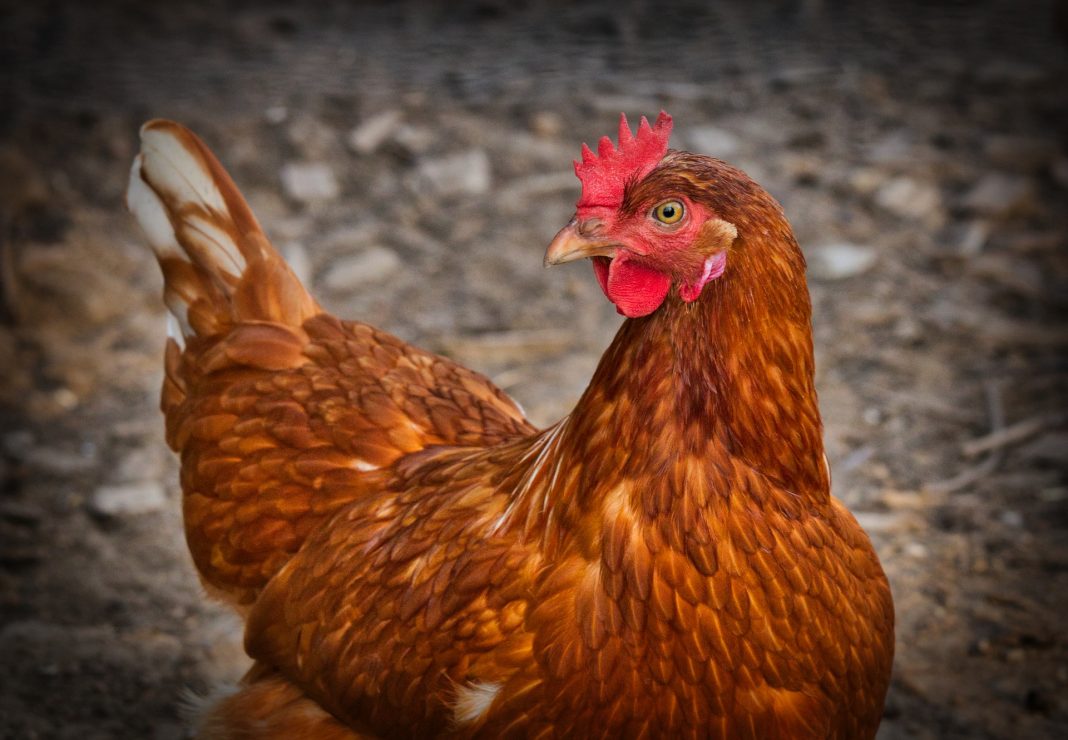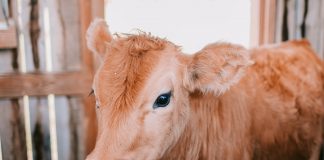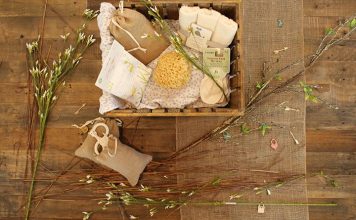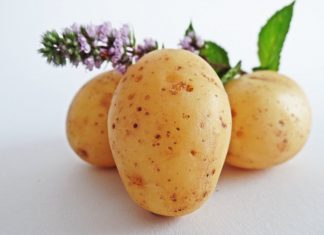 |
|
| Issue #109 • January/February, 2008 |
When I was a child, I used to read and re-read the chick section in our Sears and Roebuck catalog. Imagine! For only two cents you could buy a perfectly good baby chick. Of course back then I didn’t understand that one had to buy a minimum of 25 chicks to get this price…or to buy them at all. I had my six pennies saved up special and for the life of me I couldn’t understand why my parents, who lived in Detroit at the time, wouldn’t send for them.
Even back then, somehow I knew I had to have my own piece of ground, a garden, and a few chickens on it. And yep, as soon as I had my very own first homestead, shortly after graduating from high school, there were chickens on it. For 43 years, there have always been chickens on our various homesteads.
|
But there is a reason. Those oh-so-cute chicks grow up into the most valuable animal on the homestead. Sure they’re cute when they’re little and pretty when they’re big. However, they are also an integral part of the homestead. When they are grown, hens provide a bounty of eggs, given happily and freely, to pay for their tender care. Extra roosters, of course, can be butchered and you will enjoy meat that cannot be bought in the store. It is tender, juicy, and so tasty you won’t believe what you’ve been missing. Or you can raise a batch of chicks, just for the meat. And that luscious meat is also free of hormones, dubious feed additives, chemicals, or antibiotics.
Those are the most often thought of benefits from keeping chickens, but what of the feathers? A breast feather comforter is nearly as warm as a goose down comforter.
And all that free fertilizer? Perhaps the least appreciated benefit of having a flock of chickens is the manure. Not only is it of extremely high quality, but chickens totally digest all weed seeds. You’ll never “plant” weeds or grasses by spreading not-quite-composted chicken manure on your garden, as with horse or cow manure.
In fact, a good way to house your flock of chickens is to make the coop in the center, with a large fenced run on either side. You can then rotate the chickens from one side to the other, using the unused run for a garden plot. Not only is it richly fertilized, but your helpful hens have dug up and eaten all of the weeds and grass, including the seeds, in your garden-to-be. Because they love to dig and scratch, they have also eaten up most of the destructive insects present, from cutworms to ticks.
I say “destructive insects” because they won’t bother earthworms as earthworms live deeper than hens scratch and only come out at night to deposit their castings. By that time your happy hens are roosting and dreaming of scratch feed and dust baths.
Chickens are also very easy to handle. I’ve never had a “mean” hen. Roosters, yes, but very seldom and you don’t need a rooster for your girls to lay lots of eggs. You only need a rooster if you want fertile eggs for hatching your own chicks or just because you want one strutting and crowing about the place.
My son, David, used to carry our hens around when he was two years old. Children and the elderly can
easily handle a small flock of chickens; the chores are fun and not burdensome. In addition, a few hens can be housed in a very small coop and run, so you can keep them in any legal place, including towns and some cities (be sure to check regulations).
There is no smell to a chicken or coop that has the bedding changed regularly. It’s only when it is not changed that visitors wrinkle their noses when they enter to see your hens. It’s amazing how nice a clean chicken coop can really smell. Of course, the more chickens you have, the harder it is to keep that coop pristine. A dozen hens make little odor from the ammonia in their waste. Housing for 500 hens always has that “breathtaking” odor, no matter how often it is cleaned. But we homesteaders seldom need more than a couple dozen birds unless we are raising them for meat, so we don’t have to deal with odor problems.
Choosing a breed that suits your purpose
Fortunately, there are dozens and dozens of common breeds of chickens, from the huge Jersey Giants down to petite bantams the size of a quail. Some are extremely beautiful while others are less gorgeous but extremely good at what they do (producing eggs or meat). Many chickens are good at foraging for a good portion of their food and are colored to avoid detection by predators. Others are brightly colored and more “domestic” in attitude.
Egg production
If you really don’t plan on eating many of your birds and only want eggs, and lots of them, consider one of the egg laying breeds. The most popular is the White Leghorn. Leghorn hens are lightweight and active, with a tendency to being a bit flighty. But boy do they lay eggs! Getting over 300 eggs a year from a good hen is not uncommon.
Want a prettier color than plain old white? Just look in a poultry catalog and find a prettier breed that still lays plenty of good eggs. Most of the highest producing egg layers lay white eggs and are lighter weight hens.
Meat production
I’ve raised lots and lots of chickens, but for the sheer feed conversion factor, the white Cornish Rock crosses far surpass anything else you can buy. In less than two months, you can go from tiny chicks to large, butchering- sized birds. We raise these and at three months, these birds dress out looking like young turkeys.
Dual purpose breeds
Okay, you want it all, both eggs and meat? There are many so-called dual purpose breeds. These are heavier than the lightweight layers but still lay lots of soft brown eggs. You won’t get the super fast turnover in a butchering bird like you do with the Cornish Rock hybrids, but then you can let your hens hatch their own eggs and raise the chicks. I’ve tried to save a few Cornish Rock hens for breeders, hoping to introduce a large size into my flock. Doesn’t work. Their legs are their weak spot. Sooner or later, usually sooner, they develop sore feet or torn muscles. Then they go down and cannot even walk.
|
Fortunately, you can raise White Rocks, which are a parent of the Cornish Rocks, Buff Orpingtons, Rhode Island Reds, Barred Rocks, or one of the other many heavy breeds that are used for cross-purposes. These heavy hens are also much more sedate and easily handled, especially when you have small children or a yapping puppy around.
The heavies don’t produce as many eggs in a year, usually averaging around 200 per hen. But it’s enough for most families.
Still want something more unique around? How about the Aracauna? It not only looks different, often having olive green legs and “ear muffs,” but it lays blue or green eggs. How cool is that? We think it’s neat and always have at least a few Aracauna hens around. They also produce quite a few eggs, and are excellent at rustling around the yard for insects and wild food.
There are many different rare and unusual breeds available, and I’ve raised many of them. Not only do you get your eggs, but you can sell either the excess young birds or breeders to other hobbyists for a decent price. My kids always had some different chickens as 4-H projects while they were growing up. And through the
4-H and your county fair, a homesteader can pick up many potential buyers for their purebred chickens.
With these “fancy” breeds, you can choose, again, from larger “standard” breeds, such as the different colors of feather-footed Cochins and mop-headed Polish to tiny Mille Fleur banties that fit in your hand. Just pick up a poultry catalog and browse the selection.
Besides browsing (and drooling over) poultry catalogs, you can visit poultry breeders in your area and attend poultry swaps and fairs to learn about different breeds and see them in “person.”
How many chickens?
When buying chicks or chickens, we always tend to overdo. This isn’t a good idea, especially for beginners in poultry.
A family of five can do quite well with a dozen hens for eggs. If, after awhile, you feel that you need more eggs, you can always add a few more hens. This allows for minimal housing, chores, feed, and space.
Okay, you really do want to raise some chickens both for eggs and to butcher later on. Why not start with 25 chicks, plus a few fancy ones for fun? Those tiny chicks don’t take much space, feed, or work. But when they reach full size, suddenly, they crowd a smaller coop and gobble down a 50-pound sack of feed every week.
How much room do you really have for chickens? It’s easy to house hens during the summer. They require only a safe place to roost at night and an area to run outside during the daytime. But if you live in an area of the country with cold winters, they will need more windproof, warmer, indoor living quarters. Twenty-five or thirty hens need as much space as half our goat barn, or an area roughly 8’x20′, and that’s not including an outside run. Even in the coldest parts of the winter, we let our hens out on nice sunny days.
Housing your flock
There is no one way to house your chickens. Fortunately, chickens are the easiest of all homestead livestock to house. I’ve seen them successfully housed in old school buses, vans, travel trailers, adobe huts, traditional chicken coops, log cabins, and even a tent, in the summer, of course. And I’ve housed my various flocks in a variety of these, myself. Yep, my half-grown chicks resided in a tent I rescued from the dump once, while we hurriedly finished their log coop. These were also the chickens that rode up the mountain on a snowmobile from the post office, and resided in a kerosene brooder in our kitchen until they were feathered out (and the kitchen was chicken dust, from top to bottom, might I add).
Nope, chickens are versatile in housing requirements, for sure. All they need is a dry, airy, yet warm in the winter home that is secure from predators, a place to happily roost off the floor, and spots in which to cuddle down and lay all those eggs. They don’t care if their nest boxes are plain wooden nests, recycled old store bins, or even cardboard boxes, and they don’t give a rip if their roosts are made from an old ladder or poles from your woods. High society, your girls are not!
How big should the coop be? A dozen hens fit nicely in a coop that is 8’x10′. This gives them space to roost, nest, and have their feed and water, yet still be able to move about and dig and scratch as chickens love to do. Do you know that those nice sterile-looking eggs in the stores come from disheveled hens that are crammed five to a cage, in which they cannot walk about, only sit and lay their egg-a-day? I’ve “rescued” a few of them when I helped catch them to ship them to Campbell’s Soup Company, as part payment for my all-night work. Those poor hens didn’t know how to walk, eat, or roost and were afraid of the sun. Luckily in a few days they followed their instinct and became true chickens.
|
And, like I said before, 25-30 hens need a coop that is at least 8’x 20′, for year-round housing.
Very popular right now is the “chicken tractor.” This is basically a small enclosed coop on wheels with a portable enclosed yard attached. I’ve used this for my purebred chickens and could move the individual coops around the yard every few days. This gives the chickens fresh ground to peck and walk around on. They eat quite a bit of foraged food this way, from grass to weeds and insects. They also fertilize the area as they occupy it.
The coop part includes a roost and nest boxes. You generally feed and water the birds in their outdoor run. In hot weather it’s a good idea to tie a tarp down over one end of the run for shade. Chickens overheat quite easily and a breezy shaded area is always appreciated.
I would put a rooster and two or three hens in a chicken tractor that had a coop 4 feet wide, 2 feet deep and 18 inches high, the coop having a sloping roof that was hinged where it met the run. The runs were 8 feet long and 4 feet wide and 2 feet high, made of 1”x4” lumber and 1-inch chicken wire. This made it very lightweight and easily movable by one person (me). I had two handles on the back of the coop and I just pulled the whole sheebang backwards until I reached fresh ground. When you have a “chicken tractor” that is larger or transported further distances, it should have wheels.
The only problems I had with my chicken tractors were predators, especially larger ones such as stray dogs and raccoons. (If you don’t think a “cute” raccoon is a chicken predator, think again.) The chicken wire is easily breached by a larger animal and the predator can flip the edges of the pen up and get at the birds.
The chicken tractor is not a winter home for your hens in any cold winter climate. To make the coop warm enough, it is too heavy to transport. And that short run soon fills up with snow, blocking all access to needed exercising room.
Many folks who only have a few hens house them in doll-house type coops. These are as artsy as you care to make them, from simple but effective plain dog-house style coops to gnome homes for your pets. The basics are few: draft-free and dry, light and airy, yet warm in the winter. The chickens can run loose, known as free ranging, or can be in a protected run. Remember though, that chickens will dig in your flower beds, pull up your prize begonias as well as weeds, and sample that just-ripe tomato that you have been watching for weeks. They’ll poop on your porch and eat the dog’s food.
So think twice about letting your girls run wild. We do let our poultry range at will. But then we have no neighbors, fence our garden and yard, feed our dogs away from the house, and train our birds that the porch is off-limits. It’s amazing what screaming and waving a broom will do.
Winter accommodations for chickens in colder climates include windows on the south for solar gain in the daytimemuch appreciated by your hens. In very cold areas, it’s a good idea to add insulation to the walls and ceiling. But be sure to cover it with OSB, boards, or plywood. Chickens will eat insulation like dessert. If you are on grid, a light hung in the coop will provide some heat and will also ensure a whole lot more egg laying going on during those long dark months. No light equals no eggs. For us off-grid homesteaders, I used to hang a kerosene lamp in the feed bin area that was wired off from the regular part of the coop with chicken wire. It gave light and also a little heat, so we got eggs all during the winter. When they raised the price of kerosene to gold I stopped doing that.
This winter, our girls will get a new compact fluorescent light hung from the ceiling, powered by its own deep cycle battery and small charger. When we run the generator, not only will it charge the house’s system, but also our chickens’. Imagine, hens having their own power system. How classy.
Be sure to add extra bedding in the winter, whether it is shavings or straw. Not only will it keep them warmer, but it will encourage them to move about more, scratching and digging. This will also keep the hens warmer.
|
If you can’t keep water from freezing in the coop, at least dump the ice out or change the containers twice a day. If they don’t get enough water they won’t produce as many eggs or stay healthy. Yes, you can dump snow in their coop for them to eat. But if this is all the “water” they get, they will eat more feed because it takes more calories to melt that snow. When you save steps by watering with snow, you spend more money at the feed store.
Whatever housing you decide on for your new flock of chickens, be sure that it is built before you get those chicks. (Remember my tent chickens? I speak from first hand experience, here.) At least our tent had a zip-tight door, a waterproof roof, and a sewn-in floor. If you just turn your grown chickens loose without adequate housing, a predator will get them for sure.
Raising day-old chicks
Sometimes you’ll just go to the feed store and order or buy your baby chicks. But when you order them from a catalog, you will pick them up at the post office. Mail-order chicks come in short, sturdy cardboard boxes with holes in them for ventilation. There is no need for feed or water as day old chicks are still living off the nutrients absorbed from the egg. But they are thirsty and hungry when they get home.
These tender babies need four things: a safe, dry, draft-free brooding area, warmth provided by a heat source so they can stay warm enough (hot room temperature is not enough; they need to have a temperature of 92-95° F available to them at first), feed, and water.
Brooding area
Bedding for new chicks should be newspaper at first. If you put down shavings, they may eat more shavings than feed. I told you they weren’t too smart at first. After they are eating well, replace the newspaper with wood shavings or ground corn cobs. Don’t use sawdust or they will eat it. It is very dusty and may cause respiratory problems. With meat breeds, it’s a good idea to only leave the newspapers down for one day. These chicks are heavier, and their bones and muscles are still weak. They can develop leg troubles as their feet slip and their legs spraddle on the slippery surface of the papers.
After four weeks, and when the chicks are feathered out, you can move them to their new adult home, complete with roosts. Roosts for these young birds should be stepped up so they can hop up on the lower rungs, then on up to the higher ones they prefer. It won’t be long before they just fly up to the top. Chickens prefer rounded roosts to square material and it is easier on their feet.
You’ll want to allow at least six inches shoulder room for each bird and have the roost poles eight inches apart to avoid having the birds “splatter” their roost-mates with you-know-what. I wouldn’t provide nest boxes until the chicks are at least four months old. If they are given access to them sooner, they’ll start to roost in the nests. This is a bad habit because the birds will foul the nests.
You can buy metal nest boxes or make your own. I’ve had real good luck using plywood for the back, bottom, and top and 1” x 12” lumber for the dividers. I like my boxes about a foot wide and high, and about 18 inches deep. This is large for a small hen, but a big hen finds it comfy, so your boxes will be versatile.
The top of your nest box tier should be steeply sloped toward the front to prevent chickens from roosting on the nest boxes.
Along the front, run a 1-inch pole a few inches out from the front of the boxes so that a hen can fly up, land on it, and choose the box she wants. It results in less “arguments” over nests and less broken eggs as a result.
Heat requirements
When you first bring your chicks home, make sure their brooding area maintains 92-95° F. This should be kept up for the first week. Then you can reduce the temperature 5° each week until you get to 70° F and the chicks are quite well-feathered. It’s better to use a red heat lamp than a clear one. It often will keep picking down. Picking is when one or more chicks are being pecked by the other birds. They will start pulling feathers, then get aggressively worse until the poor chick is a bloody mess or is actually killed and eaten by its pen mates. If this begins to happen, and watch carefully for it, scatter some grass or fruit pieces in the pen, put a little pine tar on the pecked bird, and dim the lights. This can often be best done by hanging a sack over one or more windows. If they continue to pick on the one chick, you’ll have to remove it or they’ll kill it. After the feathers regrow, you can put it back and they will usually leave it alone.
Picking is also a sign of chicks that are too hot or too crowded, so avoid these situations. It’s easier to prevent picking than cure it!
If you will be brooding your chicks in a small building, you can hang a heat lamp from the ceiling, near one corner. It’s a good idea to make a cardboard circle a foot high and 6 feet in diameter. This keeps the new (not so smart!) chicks corralled near the heat, yet able to get away from it if they wish, as well as near the food and water.
|
If you are using another source, rather than a heat lamp, such as a commercial or farm brooder, it’s a good idea to also provide a small light at night. This keeps the chicks from piling in a corner and smothering each other. I had this trouble with our homebuilt kerosene brooder on our remote Montana mountain homestead so we set a kerosene lamp on the table at the end of the brooder pen and the piling instantly stopped.
I’ve also used an empty stock tank and it works quite well. You can hang a heat lamp at each end of an 8 foot tank, leaving the center for a cooler area with the food and water.
Feed
Probably the easiest feed to use is commercial chick starter. This is crumbled grain, not too fine, nor too coarse, which includes vitamins and minerals to keep them growing quickly. “But what did Grandma do?” I can hear you ask. Grandma raised her chicks on a mix of coarse ground cornmeal, oatmeal, milk, and hard-boiled eggs. She probably mixed it up so it made a crumbly dough-like feed and fed them several times a day, leaving just enough in their pan so they didn’t have any left at the next feeding (to prevent it from molding), but weren’t too hungry waiting for the next feeding.
Also, remember that Grandma did not have those super duper Cornish Rock hybrid chicks to raise, either. They grow so fast they have special feed needs. They cannot have feed left in front of them 24/7 or they will develop leg problems, and become unable to walk and will die. With these broiler chicks, you should provide all the feed they can eat in a day, then let it run out at evening time, and fill the feeders again in the morning.
Water requirements
For each 25 chicks, you’ll need a 2-foot long chick feeder and a 2-quart watering jar. Chicks are very prone to drowning, so use a waterer while they are young. If you just put a pan of water in the brooding area, you are sure to lose a few babies. Just as soon as you get your box of chicks home, take the time to dip the beak of each chick in the water so they learn how to drink and where the water is. It’s also a good idea for the first three days to put 3 Tbsp. of sugar in the waterer to give the new chicks energy so they will eat, drink, and be active. It helps get them off to a good start. There are packages of special chick vitamins, minerals, and electrolytes available to help get the babies going. We usually use this, as well.
Keep those feeders (except at night for the broiler chicks) and waterers full. It’s amazing how fast baby chicks can dehydrate or can actually starve to death.
In addition to feed and water, chicks need grit to digest their food. Sprinkle a little grit on the feed every day. Don’t use a lot or they’ll eat the grit, not the feed.
Predator protection
Everyone has a “fox that got my chickens” story. Yet in all the years we’ve lived in wild and remote country, we’ve only lost one setting hen to a predator. And it’s not because we didn’t have any around. Our homestead was also home to coyotes, wolves, mountain lions, bears, lynx, bobcats, foxes, raccoons, weasels, fishers, mink, pine martens, hawks, eagles, and owlsall of which would truly love a free meal of tender chicken. The hen we lost hid her nest out in the brush and absolutely refused to be lured into the coop.
I believe the biggest reason we have had such good luck is that we always, without fail, shut our livestock and chickens in at night. And once in it is hard for predators to gain access. Of course, having several big dogs around the place does help.
Weasels are bloodthirsty little buggers. They really are cute, with black, shoe-button eyes, alert stand-up ears, and round little cat-like paws. In the summer they are brown with a white belly and in the winter, they turn ermine white with a black tip on their tail. One weasel can squeeze through a knothole the size of your thumb and kill all your chickens in one night. I had it happen long ago, back on the farm.
I didn’t know a weasel could squeeze through a hole that small, nor did I know that they could climb like a squirrel. I do now. That big crack over the door? Or under it? That place where the board is rotted off? Yep, a weasel can pop right through. We even had a friend who had a weasel pry up the hardware cloth covering the stock tank serving as a chick brooder in the barn. No more chicks. The moral to this story is to make your coop weasel-tight.
If larger predators are a possibility in your area, it is a good idea to make your doors stronger and to bury heavy gauge wire below the door and along your outside pen. I plan on using 6-foot chicken wire for my large chicken yard/orchard. But this wouldn’t keep out a determined coyote or stray dog. So on the outside I’m using 16-foot welded wire stock panels for added security. It’s also a good idea to bury your fence in the ground to dissuade aggressive diggers too.
In many areas, your most dangerous chicken predator is a dog or several loose dogs. They can be nice dogs, but seeing those noisy, fluttering chickens makes them lose their cool and turn predator. If you live where stray dogs, or even your neighbors’ dogs roam, it’s a good idea to re-inforce your run with stock panels and electric wire. Just in case.
If raccoons are plentiful in your area, I would strongly suggest adding an electric wire six inches up from the bottom of your fence and an additional strand on top of the fence to keep those adorable, fluffy, bloodthirsty buggers out of your chicken run. I once (again on the old farm) had 33 turkeys killed and dragged off by raccoons who dug under the door, broke a window, and chewed through the chicken wire fence. I trapped five of them just outside the fence and shot one in the act of grabbing a hen off the roost. No circumstantial evidence here.
If hawks and owls are a problem, it’s easiest to put a netting over your outside run and don’t let the birds free range. If you do, there is not much chance of protecting them. You cannot legally shoot a hawk or owl, nor should you. They are just doing what nature built them to do.
Feeding the homestead flock
There are varied opinions as to what you should feed your chickens. Some people, especially commercial producers and feed store salesmen, staunchly recommend that you only feed your chickens commercial feed appropriate to their age and use: chick starter, chick grower, broiler maker, egg mash, etc.
|
Personally, I do not like all the additives that are in commercial feed. Yes, I do start my chicks on commercial chick starter; I can’t spend the time making “baby formula” like Grandma did. But as soon as they start to feather out, I gradually switch to a mixture of a good scratch feed (cracked corn, milo, and wheat, primarily), in addition to all the fresh milk they can drink, and all the kitchen scraps and garden produce I have available for them.
My chicks grow like weeds on this and mature to fill my canning jars and lay all the eggs our family could ever use.
I always plant a little “extra” in the garden for the goats and chickens: corn, greens, squash, and root crops. It’s amazing how a regular handful of garden produce year-round can cut your feed bill and raise the quality of your eggs. When I crack open one of our eggs, it has an orange yolk that stands up firmly on the white. The store eggs are so pale by comparison that when my son, David, saw a neighbor break one into a pan he whispered to me, “Mom! What’s wrong with their eggs?”
You know the old saying “You are what you eat?” Well, it holds true for your chickens, too. And I have hens that are seven years old and still lay their egg a day unless they are molting. Commercial hens are burned up by the age of one year and are made into soup. Ever wonder why? It’s a combination of breeding a hen that just about lays herself to death and the feed she must eat all her life.
I want to know what my birds are eating. Try to find that out from the tag on your commercial chicken feed. There’s things in it that I can’t even pronounce, let alone know what they are. Then there are the “products” and “digests,” etc. I feel better giving my chickens real food.
In the winter, when they can’t forage outside, I always bring them some vegetables or vegetable scraps from the basement, along with the pail of food scraps they also get daily. In real cold weather, they appreciate a treat of alfalfa leaves or pellets soaked in boiling water until they are nicely warm, but cooled down enough to eat.
Health concerns
First let me say that I have had very few sick chickens. Ever. Once in awhile, one will just die. People do, too. But by feeding your flock well and providing them with relatively warm, airy, dry housing, you will seldom see sick birds. Most poultry diseases only occur in large commercial flocks.
When our kids showed chickens at the fair and 4-H shows, we always quarantined them for three weeks after they came home. You never know what your birds may pick up from neighboring birds caged next door. By taking this precaution, we never had a problem.
What does a healthy bird look like? It is alert and active. Its feathers are smooth and it holds them close to its body. (Except when it’s a hen running with roosters, who will quickly denude her back and the back of her head during repeated breedings, or when she’s in molt twice a year.) The eyes and nostrils are clear of running or crusty discharge. When you pick the chicken up, she should feel plump and heavy. A very light chicken is usually thin because of a health problem.
Parasites
Even flocks that are well cared for will occasionally pick up external parasites, usually chicken lice or mites. Chickens will try to keep themselves free of these by taking frequent dust baths and by preening. But sometimes they need a little help. It’s a good idea once in a while to catch a bird and closely examine its skin, beneath its feathers. Use a magnifying glass, if necessary. Chicken mites are about the size of the dot a pencil makes on a paper. Lice are larger and are pinkish clear. Both will get on humans for a short time, but will not stay.
In the old days, they dusted the nests with DDT and nicotine dust. Obviously, you wouldn’t even consider the DDT, and nicotine dust is very poisonous. Nicotine, as in tobacco, as in cigarettes…point made. Instead, I dust my chickens with a 1% rotenone compound that is often sold in gardening sections at hardware and feed stores. This is mild and does the trick. It’s a good idea to clean and dust the coop first, then dust the chickens. Be sure you totally remove the bedding and clean out the nest boxes too or you’ll risk reinfestation.
Scaly leg
|
This is a quite common problem, also caused by external parasites, the leg mite. You cannot see these mites, so there’s no sense in looking for them. They cause the legs to become rough and scaly. In severe cases they cause bleeding and the bird will lose weight and die. Fortunately, they are quite easily treated. Simply dip both legs, one at a time, in a tall can of vegetable oil. Repeat this once a week until the legs show signs of improvement. The oil not only smothers the mites but helps soften and remove the scales.
Coccidiosis
Coccidiosis is most often seen in chicks confined to a brooding area. It is caused by an internal protozoa. The symptoms include diarrhea, weakness, sitting around with feathers puffed up, and lack of growth. Death often results without treatment. Fortunately, coccidiosis can usually be prevented by keeping dry, clean bedding under your chicks at all times. It can be diagnosed by taking a small sample to your veterinarian for a fecal examination.
Most cases of coccidiosis can be effectively treated by putting medication in the drinking water. Many veterinarians use Sulfadimethoxine at a dosage of 2 tsp. per gallon of drinking water.
Upper respiratory problems
There are several chicken diseases that can show up with upper respiratory symptoms. To complicate matters, some of these are viruses which have no effective treatment but good care, while others are bacterial and often respond to antibiotics.
Upper respiratory symptoms include mattered eyes and nostrils, discharge from the nostrils, sneezing, and wheezing.
In the home flock, most cases of upper respiratory diseases can be traced to two things: a coop that is continually damp and closed in, and a dry coop, often bedded with sawdust. In both cases, getting some good ventilation really helps. We’re not talking about windy, but some steady cross-ventilation to keep fresh air in the coop. The damp closed-in coop is often seen in the winter when some chickens are not allowed to go outdoors. A combination of built-up litter and the ammonia generated by the manure sets the chickens up for a serious problem with upper respiratory diseases.
If your chickens are not allowed out in the winter, be sure to change the bedding frequently, and crack open a south facing window a bit to let in fresh air, at least during the daytime when it is milder out.
Should these care tips not provide prompt relief, it would be a good idea to treat the flock with an antibiotic, such as Terramycin, for ten days. While this will not “cure” a viral infection, it will usually take care of bacterial diseases and will prevent a secondary infection from occurring, following, or in conjunction with the viral illness.
Impacted crop
Because chickens are instinctively “peckers,” they will often eat anything they can swallow. Their crop can become impacted with a great variety of foreign objects as well as too much straw, dry grass, or bedding. David once lost a pet chick because it picked up many little pieces of paper that David had punched with a hole punch. By the time we knew what had happened it was too late. This was a sad lesson.
|
The chicken with an impacted crop will have a large crop that stays large for over two hours. The bird acts distressed and repeatedly works its neck, trying to move the impaction down into the digestive tract. Finally it becomes weak and lethargic. And, as David experienced, it can die.
Usually you can effectively treat an impacted crop, if you notice the bird in time and treat it. The treatment consists of 2 Tbsp. of vegetable oil sucked into a bulb syringe and squeezed slowly into the chicken’s mouth. Don’t rush this or the bird may choke. When the oil is all in, gently massage the oil into the mass in the crop, trying to work it apart and either up into the mouth, where she will violently shake her head and fling the offending pieces away, or down into the digestive tract. When the crop is less distended, keep the chicken quiet and warm, withholding feed for 24 hours, yet providing plenty of water.
Egg bound
On the other end of the chicken, the working end, is another fairly common problem. For some reason or another, the hen can’t push out the egg. It’s sort of like constipation only with an egg. Often it is a very large egg or else one that is dry. Again, get out your trusty bulb syringe and vegetable oil and gently inject 2 Tbsp. of vegetable oil into the vent around the egg. This usually works rapidly and quite well. In extreme cases, when the egg cannot be passed, you may be able to save her life by poking the egg with needle-nosed pliers to break it and very gently pull pieces out so the egg shell will collapse, then be able to be passed.
What about bird flu?
Yeah, okay. Yes, it is possible for a flock of chickens to catch bird flu from wild birds. It’s also possible that they may be hit with a meteor. Bird flu is caused by a virus, H5N1. Although it has been found in Asia, it never has been seen in the United States. Never. So unless it does cross the ocean, I wouldn’t worry about that problem. Yet.
If it should, I would recommend completely isolating your flock from wild birds. This means having them in an enclosed, bird-proof coop and an enclosed bird-proof outdoor run. Then your birds will probably be safer than you will be. They don’t go shopping, traveling, to school, to work or play, or to mix with other vectors.
|
Setting your own hens
You can certainly buy new chicks every time you want a new flock or a few new birds. But there are certain advantages to breeding your own replacement chicks. First of all, it’s fun and entertaining to let a hen go broody and hatch out a bunch of fuzzy little peepers. Then, when you hatch your own chicks, there is no chance of introducing some health problem into your flock from outside sources. Reputable hatcheries have exceedingly healthy chicks, but there is always a chance for the baby chicks to pick up something along the way. You see this most often with “feed store” chicks, where they come in from a hatchery, then are available to the public for several days, often in open stock tank-type brooders.
Then, too, you never know when some sort of country-wide disaster may hit, severely limiting the ability to buy chicks…or much else. If you have hens that can raise chicks, you are never at the whims of fortune…or lack of it.
Heavy breed hens and banties are exceedingly good at sitting on a nestful of eggs, come hell or high water. My kids used to be scared to reach under a setting hen to check her eggs. My oldest son, Bill, told me of his experience one day, checking under a setting hen. “How many eggs does she have?” I asked. He shrugged. “She went like this,” he squinted his eyes viciously and stuck out his elbows, “and she yelled at me!” They will peck, too, protecting their flock of eggs.
It’s usually a hen over two years old that will go broody and want to sit on eggs. When this happens and you want to let her hatch eggs, make sure she receives a clutch of fresh eggs of a breed you want to hatch. The hen does not have to sit on eggs of her own breed. While I love banties, I always put heavy breed eggs under her to sit on. I don’t need scads of teeny, tiny chickens.
Keep her in a comfortable, private location. If she is in a nest box and refuses to be moved to another “sitting nest,” hang a piece of feed sack down over the door to keep other hens out. If you don’t you’ll have hens laying eggs in the nest with the sitting hen and they won’t hatch with the first batch and will only go bad.
If left alone and only daily offered food and water, she will handle hatching the eggs just fine, turning them several times daily to ensure that they hatch well. One day you’ll hear little peeps coming from under her, and lo and behold, there are several fuzzy heads peeping out from under her wings. Keep the chicks in the nest until all have hatched. There are often a few eggs that are bad and won’t hatch. They do not need feed and water for 24 hours, but should be offered some the next day if the hen is still on the eggs. I offer water in a shallow dish three times a day and leave food in the front of the nest for them.
When they are out of the nest, they will follow Mom around the yard, scratching and eating happily. Again, chicks drown easily so be sure there are no deep water containers available. Chicks flying up to get a drink out of my goat water tank and falling in have caused my biggest losses through the years.
When you raise your own chicks, you often have a ready market for the young, grown birdsprovided that they are a pure breed of a popular type or a rare breed that is in demand. This helps pay for the flock’s feed and other costs. Sometimes a person only wants a rooster to cross with their hens, but selling a trio consisting of a cockerel (young rooster) and two pullets (young hens) is a common practice.
In addition to selling surplus young stock, selling your surplus eggs also provides income for the homestead. Today many health-conscious people eagerly seek out home-raised free-range eggs, as opposed to “chicken concentration camp” eggs from the local store. And they will happily pay a premium price for them too. I would not want to have enough hens to make a substantial income from the eggs, but you never have a problem selling any excess eggs from time to time. A simple roadside sign or a note on the bulletin board at the feed store usually directs more customers to you than you can believe. Farm fresh eggs are a very marketable commodity at local farmers’ markets, as well. And not only will you develop regular customers, but new friends to boot!

























My store bought chicks have poopy butts, can I clean them with warm soapy water or is there a deeper issue that I need to be aware of? Your chicken artical was very helpful in many ways.
Thank you.
What causes my hen to have a pasty butt & what can I do abt it…..love your article on chickens.?